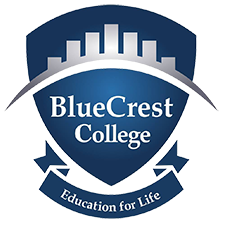Dr.Vivekananth Padmanabhan| Head of Department IT| Personality Analyst
Can you spot deception from words without even looking at the person?
Welcome to SNAP (Stories Narrative Assessment Procedure).
Scenario 1:
A person is complaining to the police about his lost necklace.
Statement:
Yesterday, while I was walking through the park, a woman approached me and asked me for directions to the nearest bus station. As I was giving her directions, she suddenly grabbed my necklace and ran away.
Narrative:I was walking through the park, enjoying the beautiful scenery, when I saw a woman walking towards me. She seemed to be in a hurry and looked a bit lost, so I offered to help her find the nearest bus station. She thanked me and I started giving her directions. Suddenly, she grabbed my necklace and ran away. I was shocked and couldn’t believe what had just happened. I immediately called the police and reported the incident. The police took my statement and promised to investigate the matter.
Now, let’s use SNAP to analyze the deception in the text. SNAP is a tool that helps to identify deception in statements and narratives by looking for inconsistencies in the story.
S -Sincerity of the statement:
The statement seems sincere and the speaker appears to be telling the truth about what happened.
N – Normality of the story:
The story seems normal and plausible. It is not uncommon for people to ask for directions in public places, so it is reasonable that the speaker would stop and help the woman.
A – Accuracy of the details:
The details in the story are generally accurate and consistent. However, there are a few things that are questionable. For example, the speaker does not describe the woman’s appearance or provide any information that could help the police identify her. Additionally, it is unclear how the woman was able to grab the speaker’s necklace so quickly and run away without being caught.
P – Plausibility of the story:
The story is generally plausible, but there are a few things that are hard to believe. For example, it is unlikely that someone would steal a necklace in broad daylight in a public place and then run away without being caught. Additionally, it is unclear why the woman would ask for directions if she was planning to steal the speaker’s necklace.
Overall, there are a few inconsistencies in the story that suggest that the speaker may be lying or exaggerating.
The lack of descriptive details and the implausibility of the story raise questions about the speaker’s credibility.
SNAP is a protocol used to identify deception in statements and narratives by looking for inconsistencies in the story.

When analyzing a text, the four main areas of focus are sincerity, normality, accuracy, and plausibility. If there are inconsistencies in any of these areas, it may suggest that the speaker is lying or exaggerating.
Let’s take another example.
Scenario 2:
A college student comes late to the class and explains the reason to his HOD.
Statement:
I was on my way to class when I got stuck in traffic. There was a huge accident on the highway and I couldn’t get through. I tried to call the professor to let them know that I would be late, but my phone battery died. When I finally arrived, the professor was already in the middle of the lecture.
Narrative:
I woke up early this morning and left for class with plenty of time to spare. However, as I was driving on the highway, I got stuck in a huge traffic jam. It was impossible to move and I couldn’t find a way around it. I was getting more and more anxious because I knew I was going to be late for class. I tried to call the professor to let them know, but my phone battery died. I couldn’t believe my luck. When I finally got to class, I saw that the door was closed and the professor was already in the middle of the lecture. I knocked on the door and apologized for being late. The professor was not happy with me and gave me a stern warning about the importance of being on time.
Let’s use SNAP to analyze the deception in the text:
S – Sincerity of the statement:
The statement seems sincere and the speaker appears to be telling the truth about what happened.
N – Normality of the story:
The story seems normal and plausible. It is not uncommon for students to be late for class due to unforeseen circumstances such as traffic or transportation issues.
A – Accuracy of the details:
The details in the story are generally accurate and consistent. However, there are a few things that are questionable. For example, the speaker does not provide any specific details about the traffic jam or the accident that caused the delay. Additionally, it is unclear why the speaker’s phone battery died and why they didn’t try to find a way to charge it.
P – Plausibility of the story:
The story is generally plausible, but there are a few things that are hard to believe. For example, it is unlikely that the speaker would not have anticipated the possibility of getting stuck in traffic and not have left earlier. Additionally, it is unclear why the speaker didn’t try to find a way to charge their phone or ask someone else to borrow a phone to contact the professor.
Overall, there are less inconsistencies in the student’s explanation and the HOD might accept it and issue him/her a warning.
How can SNAP be used to find deception in any text, whether it is an email, text, or phone conversation?
Analyze the content using the SNAP (Sincerity, Normality, Accuracy, and Plausibility) criteria to see if there are any inconsistencies; if so, the statement may be false.
SNAP is a great tool to detect deception in text, and don’t believe anything until you have SNAPed it






